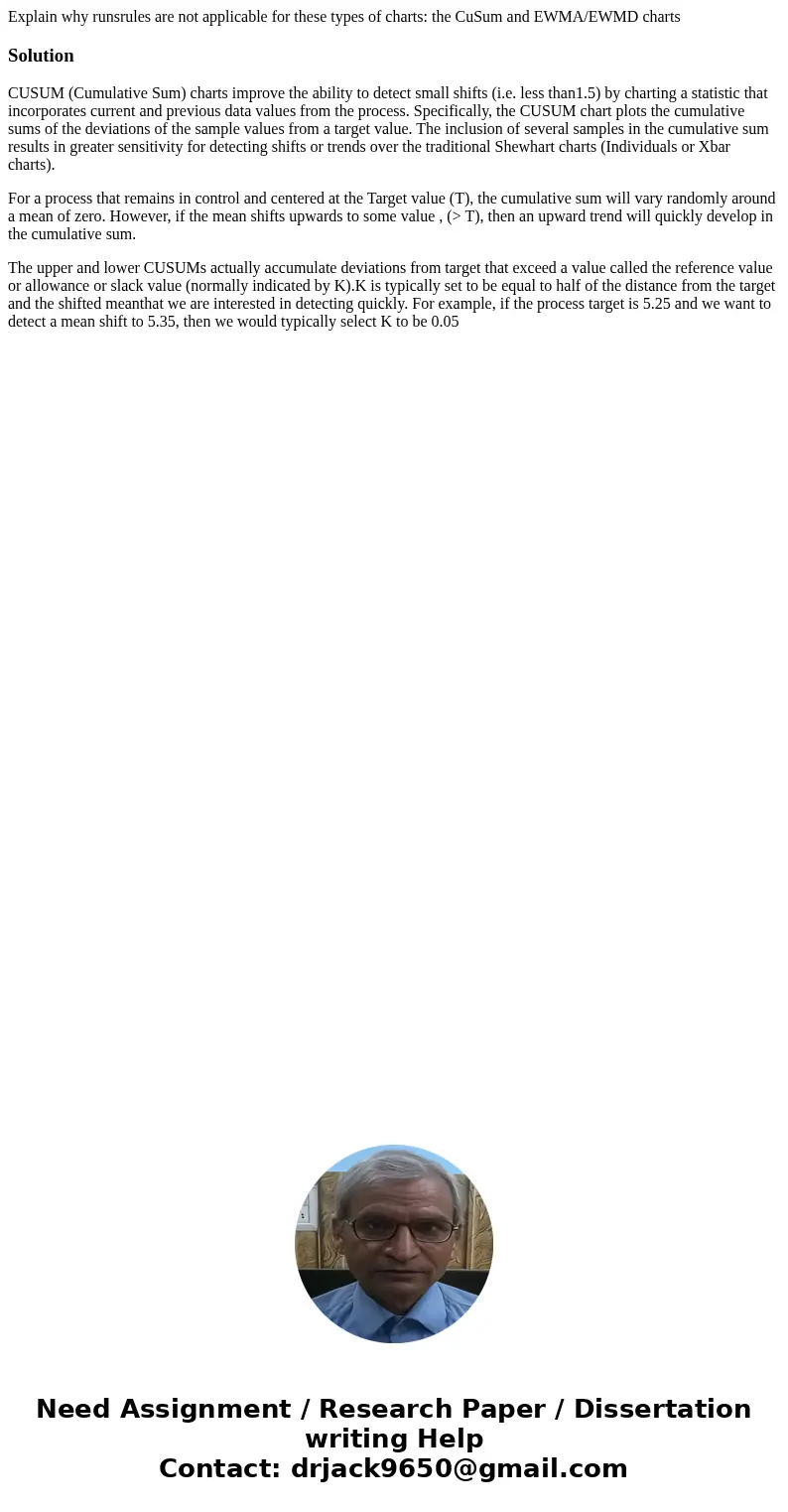Explain why runsrules are not applicable for these types of
Explain why runsrules are not applicable for these types of charts: the CuSum and EWMA/EWMD charts
Solution
CUSUM (Cumulative Sum) charts improve the ability to detect small shifts (i.e. less than1.5) by charting a statistic that incorporates current and previous data values from the process. Specifically, the CUSUM chart plots the cumulative sums of the deviations of the sample values from a target value. The inclusion of several samples in the cumulative sum results in greater sensitivity for detecting shifts or trends over the traditional Shewhart charts (Individuals or Xbar charts).
For a process that remains in control and centered at the Target value (T), the cumulative sum will vary randomly around a mean of zero. However, if the mean shifts upwards to some value , (> T), then an upward trend will quickly develop in the cumulative sum.
The upper and lower CUSUMs actually accumulate deviations from target that exceed a value called the reference value or allowance or slack value (normally indicated by K).K is typically set to be equal to half of the distance from the target and the shifted meanthat we are interested in detecting quickly. For example, if the process target is 5.25 and we want to detect a mean shift to 5.35, then we would typically select K to be 0.05

 Homework Sourse
Homework Sourse